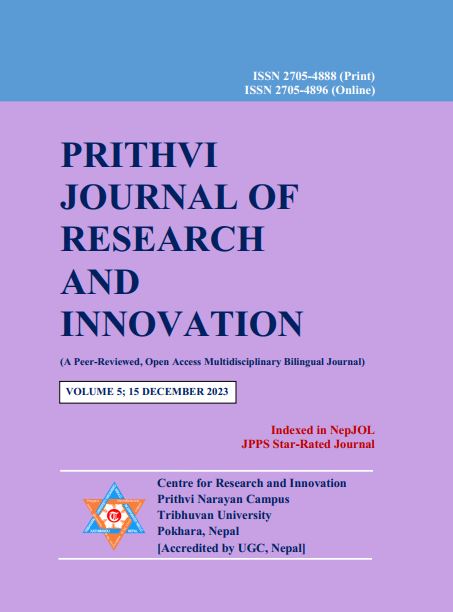The Practice of Worshipping Goddesses in Tal Barahi and Bindhyabasini Temples: Implications for Promoting Dignity of Women
DOI:
https://doi.org/10.3126/pjri.v5i1.60688Keywords:
Hindu goddesses, religious abodes, goddess worship, cultural practices, women's dignityAbstract
The Pokhara valley, with so many Hindu temples of goddesses, offers an unexplored relationship between the stories documented about the goddesses, their worship and women’s dignity. This paper explores two of these monuments namely Tal Barahi and Bindhyabasini with an aim to find out their latent religious existence and socio-cultural implications. Through an ethnographic inquiry and narrative analysis, it excavates the links between the stories documented, the worship practice, and the symbolic meaning that exists behind them. Along with the narratives afloat on mythical, narrative, and local cultural grounds of these religious abodes, this study focuses on the message to acknowledge, accept, and respect women, which the practice of goddess worship exudes. The paper concludes that the goddess worship is a custom that commenced as a form of veneration to their attributes of human welfare, it advocates free will and agency for women, thus bearing the possibility to be adapted as a religious tool to promote women's dignity.
Downloads
Downloads
Published
How to Cite
Issue
Section
License

This work is licensed under a Creative Commons Attribution-NonCommercial 4.0 International License.
© Centre for Research and Innovation (CRI), Prithvi Narayan Campus (TU)

